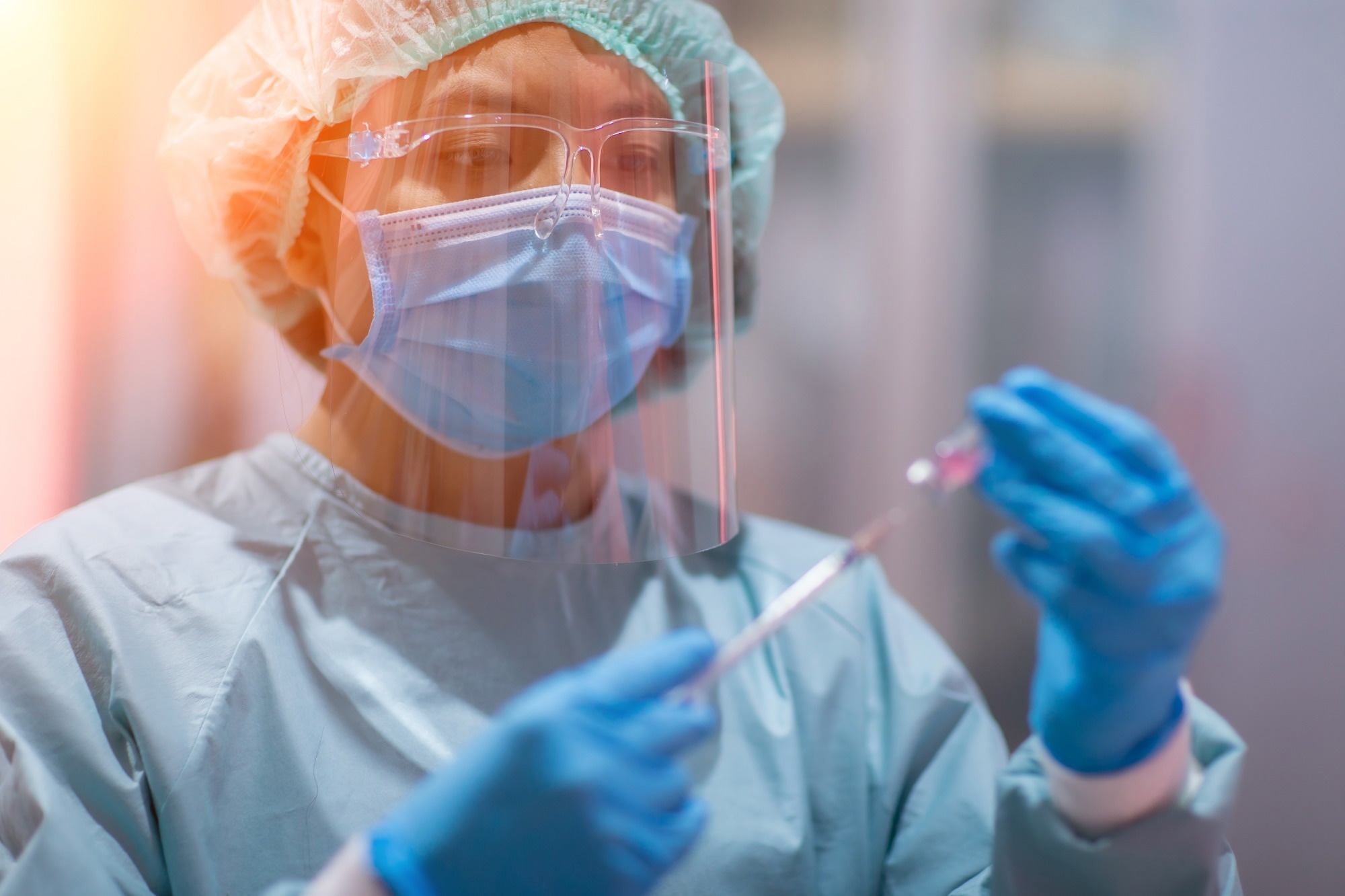 Study: Distinct immune signatures discriminate SARS-CoV-2 vaccine combinations. Image Credit: AnaLysiSStudiO / Shutterstock
Study: Distinct immune signatures discriminate SARS-CoV-2 vaccine combinations. Image Credit: AnaLysiSStudiO / Shutterstock

 *Important notice: medRxiv publishes preliminary scientific reports that are not peer-reviewed and, therefore, should not be regarded as conclusive, guide clinical practice/health-related behavior, or treated as established information.
*Important notice: medRxiv publishes preliminary scientific reports that are not peer-reviewed and, therefore, should not be regarded as conclusive, guide clinical practice/health-related behavior, or treated as established information.
About the study
In the present study, researchers compared several heterologous and homologous COVID-19 vaccination regimens to determine the most effective vaccine strategy against SARS-CoV-2.
Different SARS-CoV-2 vaccines (based on three mechanisms [adenovirus vector-based, messenger ribonucleic acid (mRNA)-based and inactivated SARS-CoV-2 vaccines) were administered in homologous [same vaccine administered for the first/prime dose (D1) and the second/booster dose (D2)] or heterologous (different vaccines used for D1 and D2) combinations.
As a result, 16 vaccination regimens were evaluated. The vaccines used for the analysis were AZD, BBIBP, Sput 26, mRNA-1273, Sput 5, and Ad5 vaccines. Vaccine combination-induced humoral and cell-mediated immunological responses to SARS-CoV-2 were assessed. D2 was administered four to 12 weeks post-D1.
Blood samples were obtained from the study participants four to 12 weeks post-D1 (T1), two weeks post-D2 (T2), and four weeks post-D2 (T3). Individuals were excluded in case of prior SARS-CoV-2 exposure and/or those with enzyme-linked immunosorbent assay (ELISA)-confirmed presence of immunoglobulin G (IgG) against the SARS-CoV-2 nucleocapsid (N) protein at T1.
A total of 1,491 samples obtained from 497 participants were analyzed. Peripheral blood mononuclear cells (PBMCs) isolated from participants’ sera obtained at T1 and T3 (n=583 samples) were subjected to IFNγ (interferon-gamma) ELISpot assays and spectral FC (flow cytometry) analysis to evaluate cell-mediated and humoral immune responses to vaccination, respectively.
In addition, serum samples and plasma obtained at the three timepoints (n=1,491 samples) were analyzed to measure IgG titers against the SARS-CoV-2 spike (S) protein receptor-binding domain (RBD) and neutralizing antibody titers (nAb), respectively.
Further, single-cell proteomic analysis was performed using 70 proteomic markers for 754 samples. The team monitored all individuals for ≤6 months post-D2 for vaccination-related AEs (adverse events). Fluorescently-labeled wild-type (wt) SARS-CoV-2 S probes were used for identifying SARS-CoV-2-specific memory B cells (mBCs).
Furthermore, the impact of vaccination regimens on the S-binding mBC phenotype was evaluated at T3, and the team investigated whether the phenotypes indicated the magnitude of humoral responses. The potential correlation between humoral and cell-mediated immune responses was assessed.
Results
AT T3, the highest anti-SARS-CoV-2 Ab titers were observed when mRNA-1273 vaccinations were administered as D2, irrespective of the vaccine type used for D1. Prime BBIBP-CorV vaccinations led to lesser class-switching (i.e., from IgM to an IgG or IgA isotype) among S-binding mBCs and the greatest SARS-CoV-2 antigen-specific T lymphocyte responses to heterologous vaccine combinations.
Heterologous vaccine combinations showed higher immunogenicity with respect to targeted Abs and cell-mediated responses than homologous ones. The proteomic analysis showed specific T and B lymphocyte immune signatures of the different vaccination combinations, indicative of distinct differences in the immunological responses.
Detectable IgG titers against SARS-CoV-2 S RBD (greater than 50 AU/ml) were observed among all participants post-D2, which increased significantly at T2 and at T3 among all participants except for those who received AZD (prime)/BBIBP (boost) vaccinations. The Ab titers peaked at T2, and reduced slightly at T3, among nearly all participants. Similar trends were observed for nAb titers, although all participants did not demonstrate detectable nAb titers.
Both anti-S RBD IgG and nAb titers increased the most post-mRNA-1273 vaccinations except when AZD vaccines were administered as D1, where Ad5 vaccinations as D2 most strongly boosted NAb titers. However, at T3, nAb titers and anti-S RBD IgG titers were the highest among individuals who received homologous mRNA-1273 vaccinations and among all those who received heterologous vaccinations with mRNA-1273 vaccines as D2.
At T3, the anti-S RBD IgG titers and nAb titers correlated positively with each other, and the percentages of all B lymphocyte populations except the S-binding mBC population were comparable among all 16 groups of vaccinated individuals. A significant drop in mBC frequency was observed among all groups at T3, except for BBIBP-boosted individuals. The mBC frequency correlated with both Ab titers, indicating that it could be used as an indicator for systemic Ab response, at least for the initial days post-vaccination.
A strongly negative association was found between Ab responses and the expression of cluster of differentiation 21 (CD21), CD38, and C-X-C chemokine receptor type 5 (CXCR5) on S-binding mBCs, whereas CXCR3 and IgA correlated positively with Ab responses. Higher post-COVID-19 vaccination anti-S RBD IgG titers and lower expression of CD38 and CD21 by S-binding mBCs were associated with robust humoral and cellular immune responses. AEs reported were comparable across all vaccination groups.
Overall, the study findings showed that heterologous combinations of COVID-19 vaccines elicited stronger Ab responses than homologous ones, except in cases where BBIBP vaccines were administered as the second dose. In addition, mRNA-1273 booster vaccinations induced the most robust Ab responses, irrespective of the prime vaccination.

 *Important notice: medRxiv publishes preliminary scientific reports that are not peer-reviewed and, therefore, should not be regarded as conclusive, guide clinical practice/health-related behavior, or treated as established information.
*Important notice: medRxiv publishes preliminary scientific reports that are not peer-reviewed and, therefore, should not be regarded as conclusive, guide clinical practice/health-related behavior, or treated as established information.